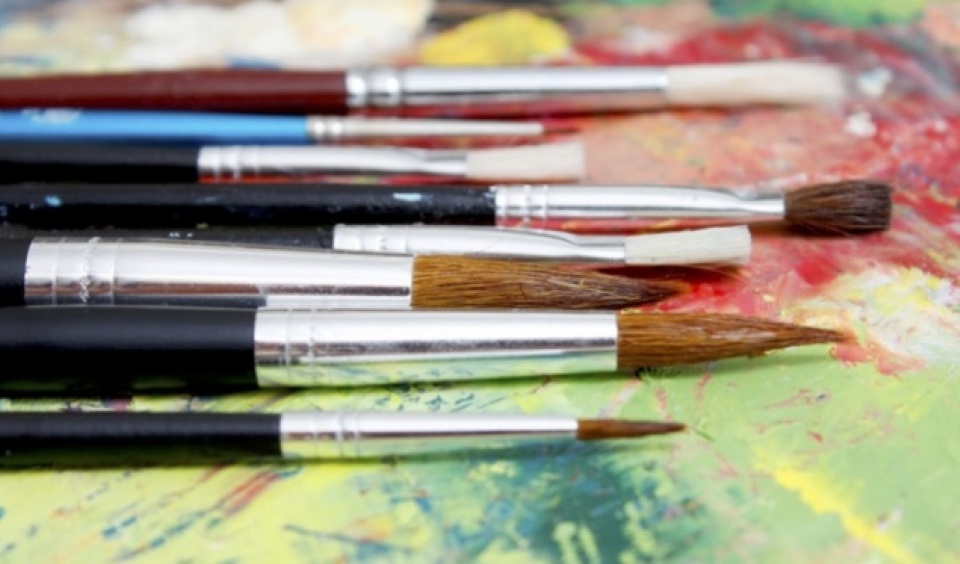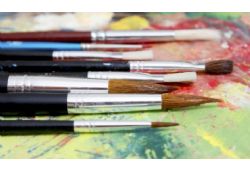Many have already
had a glimpse into the vast world of art therapy with the new trend of adult
colouring books and colour therapy, but when art therapy is conducted by a
trained therapist it can achieve much more than solely relaxation and stress
relief in the moment. In fact, art therapy is not limited to those who consider
themselves to be creatively inclined, nor is it only for a particular age
group.
Promotes Self-Exploration and Self-Expression
Many adults lean
toward verbal therapy, but there are also many who might feel as though they
cannot talk about their feelings. “By identifying their emotions on a creative
level, people are enabled to understand how their emotions are affecting their
current problems,” says Reyhane Namdari, an Art Therapist in Pointe-Claire.
Children might have
limited language and communication skills, while adolescents may be less
willing to talk about their feelings. When drawing, painting, molding clay, experimenting
with photography, music, or even filmmaking with the guidance of an art
therapist, they may more easily open up and uncover their emotions. This can
lead to confronting the negative feelings that have been affecting their social
lives or mental health without having to verbalize everything immediately.
Working through Difficult Life Events and Improving
Social Skills
Art therapy can be a
catalyst for healing during or after difficult life events or traumatic
experiences, whether they are current or from childhood; for example, dealing
with addiction, divorce, loss, depression, anorexia, or abuse.
Parents might seek
the help of an art therapist if their child is having problems with excessive
anxiety, school refusal, their parents’ divorce, eating disorders, aggression, the
symptoms of ADHD, or major life changes such as moving to a new city. “Using
Cognitive Behavioral Therapy based art therapy, we can focus, for example, on a
child’s maladaptive behaviors or emotions using art or play therapy to tackle
these behaviors and replace them with more socially accepted ones,” says Namdari.
Identifying Particular Mental Illnesses or Traumatic
Events
In the 19th
century, French psychiatrists found that there were common characteristics
across the artwork of their patients. By observing their artwork, the
psychiatrists discovered that they could often identify specific mental
illnesses and victims of sexual abuse.
Relaxation and Stress Relief
Art in general can
be cathartic and it is safe to say that it can help achieve a state of calmness
and peace. Many use art as a time for reflection and gaining clarity over their
thoughts; however when we are referring to art therapy,
there is so much more to consider. “A colouring book allows you to be mindful
and it relaxes you, but the underlying problem is not being discussed or
identified. Some people are not aware of their problems and might need help making
sense of their underlying emotions,” explains Namdari.
Art therapy might
benefit you even if you think of yourself as art illiterate―it is the process
of the art making that is therapeutic, not the end result.

 In The Latest Issue:Latest Issue:
In The Latest Issue:Latest Issue:
- Celebrating Community an...
- Celebrating the Unsung H...
- Understanding Newborn St...
Articles
Calendar
Virtual- ANNUAL TEACHER APPRECIATION CONTEST
- APPUI LAVAL
- ARTS & CULTURE
- CAMPS
- CAR GUIDE
- CCIL
- CENTENNIAL ACADEMY
- CHARITY FUNDRAISING
- CITYTV
- COSMODÔME
- COMMUNITY CONNECTIONS
- COVER STORY
- DINA DIMITRATOS
- ÉCOLE SUPÉRIEURE DE BALLET DU QUÉBEC
- EDITORIALS
- ÉDUCALOI
- EDUCATION
- EMPLOYMENT & ENTREPRENEURSHIP
- FÊTE DE LA FAMILLE
- FÊTE DU QUARTIER SAINT-BRUNO
- FAMILIES
- FESTIVAL LAVAL LAUGHS
- FÊTE DE QUARTIER VAL-DES-BRISES
- FINANCES
- GLI CUMBARE
- GROUPE RENO-EXPERT
- HEALTH & WELL-BEING
- 30 MINUTE HIT
- ANXIETY
- CHILDREN`S HEALTH & WELLNESS
- CLOSE AID
- DENTAL WELLNESS
- EXTREME EVOLUTION SPORTS CENTRE
- FONDATION CITÉ DE LA SANTÉ
- GENERAL
- HEARING HEALTH
- MESSAGES FROM THE HEALTH AGENCY OF CANADA
- MENTAL HEALTH
- SEXUALITY
- SOCIAL INTEGRATION
- SPECIAL NEEDS
- TEENS
- THE NUTRITION CORNER
- THE NUTRITION CORNER - RECIPES
- VACATION DESTINATION
- WOMEN'S FITNESS
- WOMEN'S HEALTH
- HILTON MONTREAL/LAVAL
- HOME & GARDEN
- INTERNATIONAL WOMEN'S DAY
- JAGUAR LAVAL
- LAVAL À VÉLO
- LAVAL FAMILIES TV SHOW
- LAVAL FAMILIES MAGAZINE CARES
- LAVAL URBAN IN NATURE
- LE PARCOURS DES HÉROS
- LES PETITS GOURMETS DANS MA COUR
- LEON'S FURNITURE
- LEONARDO DA VINCI CENTRE
- LFM PREMIERES
- LIFE BALANCE
- M.P. PROFILE
- MISS EDGAR'S AND MISS CRAMP'S SCHOOL
- MISSING CHILDREN'S NETWORK
- NETFOLIE
- NORTH STAR ACADEMY LAVAL
- OUTFRONT MEDIA
- PASSION SOCCER
- PARC DE LA RIVIÈRE-DES-MILLE-ÎLES
- PÂTISSERIE ST-MARTIN
- PIZZERIA LÌOLÀ
- PLACE BELL
- PORTRAITS OF YOUR MNA'S
- ROCKET DE LAVAL
- SACRED HEART SCHOOL
- SCOTIA BANK
- SHERATON LAVAL HOTEL
- SOCIÉTÉ ALZHEIMER LAVAL
- STATION 55
- STL
- SUBARU DE LAVAL
- TECHNOLOGY
- TEDXLAVAL
- TODAY`S LAURENTIANS AND LANAUDIÈRE
- TODAY`S LAVAL
- WARNER MUSIC
- THIS ISSUE
- MOST RECENT
Magazine
Art Therapy: Not Only for The Creative
Articles ~e 105,7 Rythme FM 4 chemins Annual Teacher Appreciation Contest Appui Laval Arts & Culture Ballet Eddy Toussaint Camps THIS ISSUE MORE...
CONTESTS Enter our contests
CONTESTS Enter our contests
CALENDAR
Events & Activities
COMMUNITY Posts Events
PUBLICATIONS Our Magazine Family Resource Directory
LFM BUSINESS NETWORK Learn more
COUPONS Click to save!
COMMUNITY Posts Events
PUBLICATIONS Our Magazine Family Resource Directory
LFM BUSINESS NETWORK Learn more
COUPONS Click to save!
SUBSCRIPTIONS
Subscribe to the magazine
Un-Subscribe
E-NEWSLETTER Subscribe to our E-newsletter Un-Subscribe
WRITE FOR US Guidelines & Submissions
POLLS Vote today!
E-NEWSLETTER Subscribe to our E-newsletter Un-Subscribe
WRITE FOR US Guidelines & Submissions
POLLS Vote today!
ADVERTISERS
How to & Media guide
Pay your LFM invoice
SUGGESTIONS Reader's Survey Suggest a Listing
LFM About Us Our Mission Giving Back Contact Us
SUGGESTIONS Reader's Survey Suggest a Listing
LFM About Us Our Mission Giving Back Contact Us
 PICK-UP LOCATIONS
Get a copy of LFM!
PICK-UP LOCATIONS
Get a copy of LFM!
TERMS & CONDITIONS Privacy | Terms
ISSN (ONLINE) 2291-1677
ISSN (PRINT) 2291-1677
Website by ZENxDESIGN



 BY:
BY: 


Tweet
Share